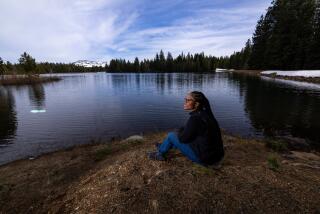Hearst to Discuss Preserving Ranch
- Share via
Hearst Corp. has agreed to postpone any development of its historic ranch in San Simeon for six months to allow two national conservation groups to come up with a plan to preserve the property forever.
Hearst picked the Nature Conservancy and the Conservation Fund as its “conservation partners.” These groups will try to raise public and private money for a deal that would set aside most, if not all, of the picturesque property from development.
“It’s a great opportunity,” said Stephen T. Hearst, who manages the ranch and other Hearst land holdings. “We are enthusiastic that we have these two fine organizations to help us craft a conservation solution for the property.”
Hearst, great-grandson of William Randolph Hearst, has spent months interviewing conservation groups that specialize in putting together complex land deals.
Now that he has selected his partners, with the help of his attorneys--including former Interior Secretary Bruce Babbitt--the groups will sit down to figure out how they might conserve the land and at what cost.
Hearst has suggested the corporation might be willing to sell some small portions of the 130-square- mile ranch as parkland, particularly parcels on the ocean side of Highway 1 in northern San Luis Obispo County.
But Hearst has mostly been talking about selling the corporation’s development rights to what has been the family’s cattle ranch for 135 years. If an environmental group or state agency bought those rights it could then retire them and place a conservation easement on the property. Such a preservation deal could run as high as $300 million, according to one estimate.
At the same time, Hearst has not ruled out reviving the corporation’s dormant proposal to build a 650-room resort hotel complex, golf course and dude ranch--a proposal rebuffed by the California Coastal Commission three years ago.
Both conservation groups said Hearst has not placed any restrictions on the kind of deal they might pull together. Nor has Hearst required that they include a hotel or other development in the deal.
“There has been no discussion of any particular deal, or transaction or price,” said Tom Macy, western regional vice president of the Conservation Fund.
“A lot of times a seller comes with a price,” Macy said, which complicates negotiations. “This time, there have been no numbers tossed around. It’s a blank slate. That’s where I like to start with something this big, this important and this controversial.”
Graham Chisholm, executive director of the Nature Conservancy of California, said the arrangement is fairly simple and leaves open many possibilities.
“Hearst is agreeing to sit down with us, and only with us, and not pursue development of the ranch during the process,” he said.
Any deal of this magnitude, “will take a combination of public and private dollars,” Chisholm said. “Whatever the deal is, if we reach one, will need to generate enthusiastic public support to work.”
Hearst declined to go into the specifics of the arrangement with the two conservation groups. But for the next six months, he said, “I don’t have any plans to apply for any building permits.”
But Hearst’s consultants and lawyers have been pushing forward on plans to subdivide the property into 279 parcels using ancient deeds that can be recognized by an arcane document called a “certificate of compliance.” The applications, if approved by San Luis Obispo County planners, could vastly increase the development potential of the property, now zoned for agriculture.
The Nature Conservancy, meanwhile, sees a golden opportunity to preserve the broad tablelands that surround Hearst Castle. “From my perspective, California has a love affair with its coast,” Chisholm said.
“This ranch, which stretches over 18 miles of coastline and covers 83,000 acres, presents us with an opportunity to protect something very special.”
“I think,” he said, “the right kind of agreement will gain tremendous support.”
More to Read
Inside the business of entertainment
The Wide Shot brings you news, analysis and insights on everything from streaming wars to production — and what it all means for the future.
You may occasionally receive promotional content from the Los Angeles Times.










